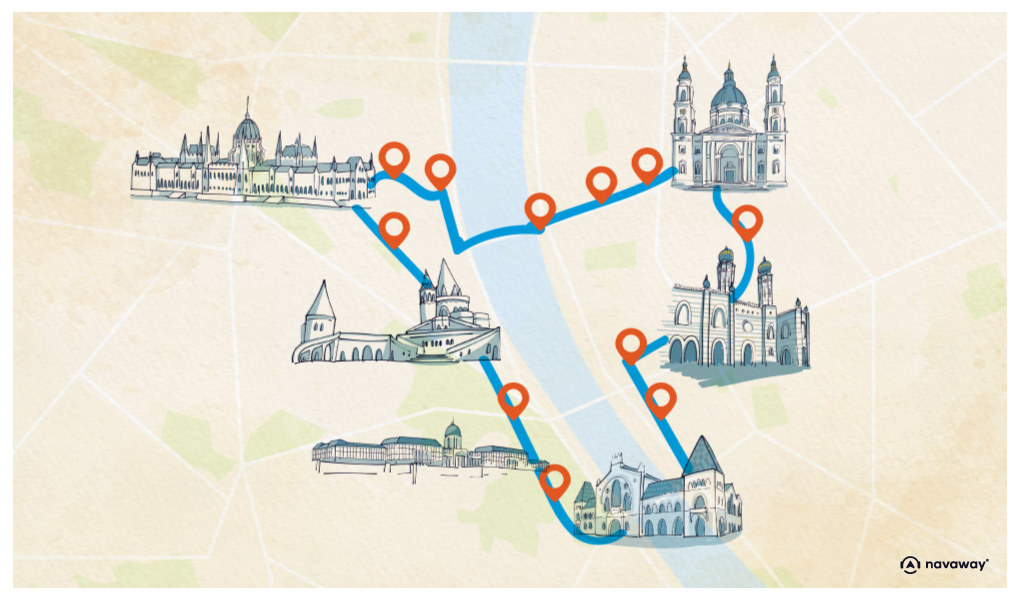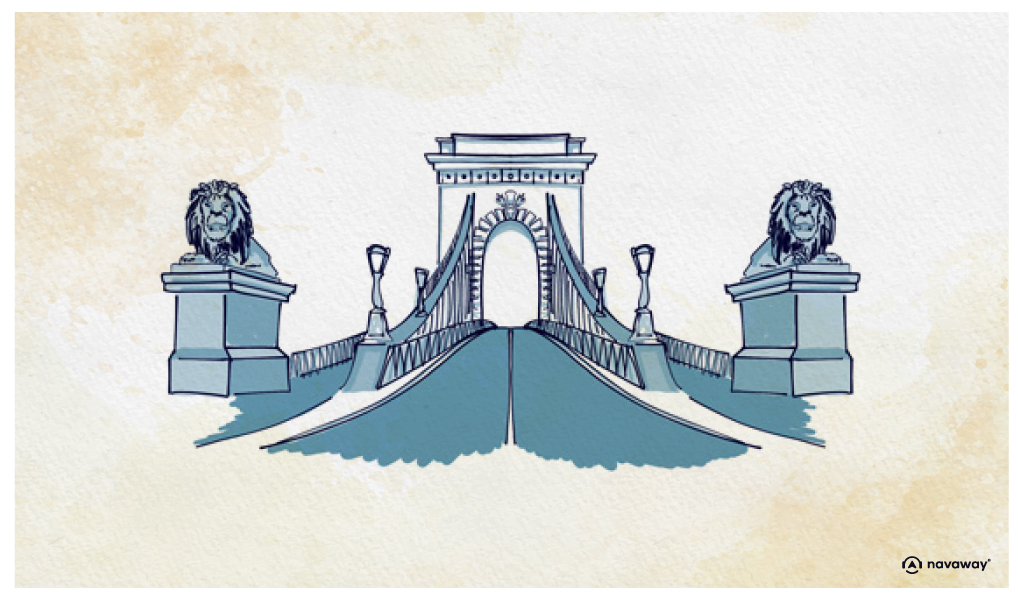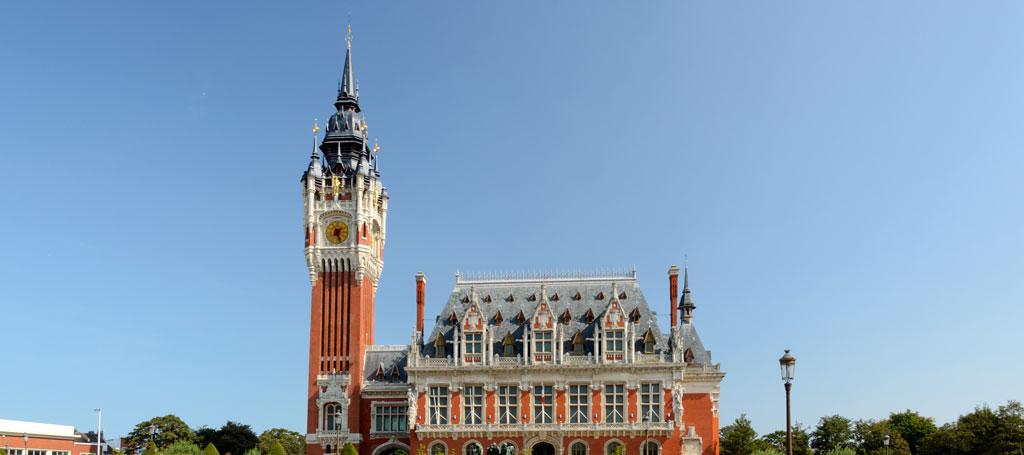
Széchenyi Chain Bridge

This point of interest is available as audio on the tour: Visit Budapest, Visiting the Queen of the Danube
The Chain Bridge, officially known as the Széchenyi Chain Bridge, is one of Budapest’s most iconic landmarks. It was the very first permanent bridge to link Buda and Pest across the Danube, inaugurated in 1849 at a time when crossing the river meant taking a boat—or walking over the ice in winter. It was a true engineering marvel of its time, the vision of Count István Széchenyi and the work of English engineer William Tierney Clark. With its 380-meter span, massive stone towers and elegant iron chains, it was among the first large-scale suspension bridges on the European continent. Sadly, like all the bridges in Budapest, it was blown up by German troops during their retreat in 1945. But the bridge was faithfully rebuilt and reopened in 1949, and it still retains its original appearance today. In fact, it was recently renovated between 2021 and 2023, restoring its full beauty. And if you look closely at both ends, you’ll notice the famous stone lions standing guard. According to legend, the sculptor was ridiculed for supposedly forgetting to carve their tongues—and, in despair, threw himself into the Danube. In reality, the lions do have tongues… they’re just not easy to spot. True or not, the mystery remains.


Discover Budapest with app
An interactive guide through the most beautiful streets, squares, and districts
22 fun audioguides full of historical facts, anecdotes, and legends





Comments